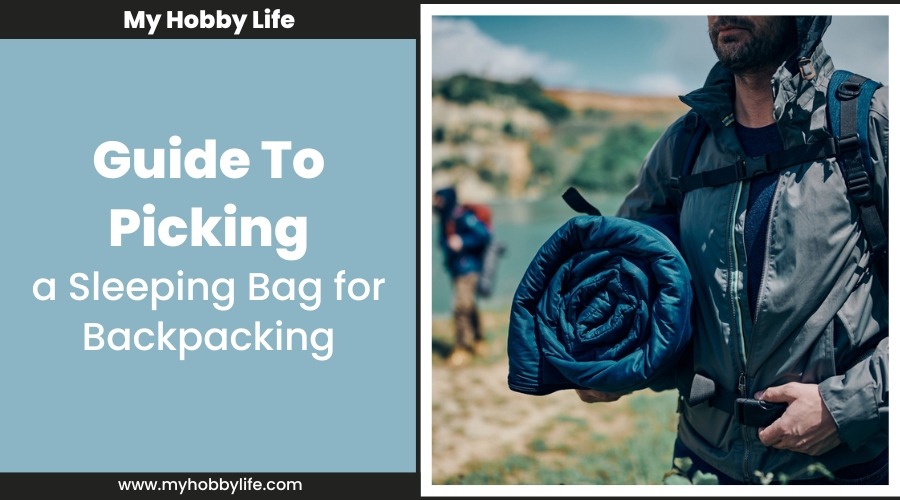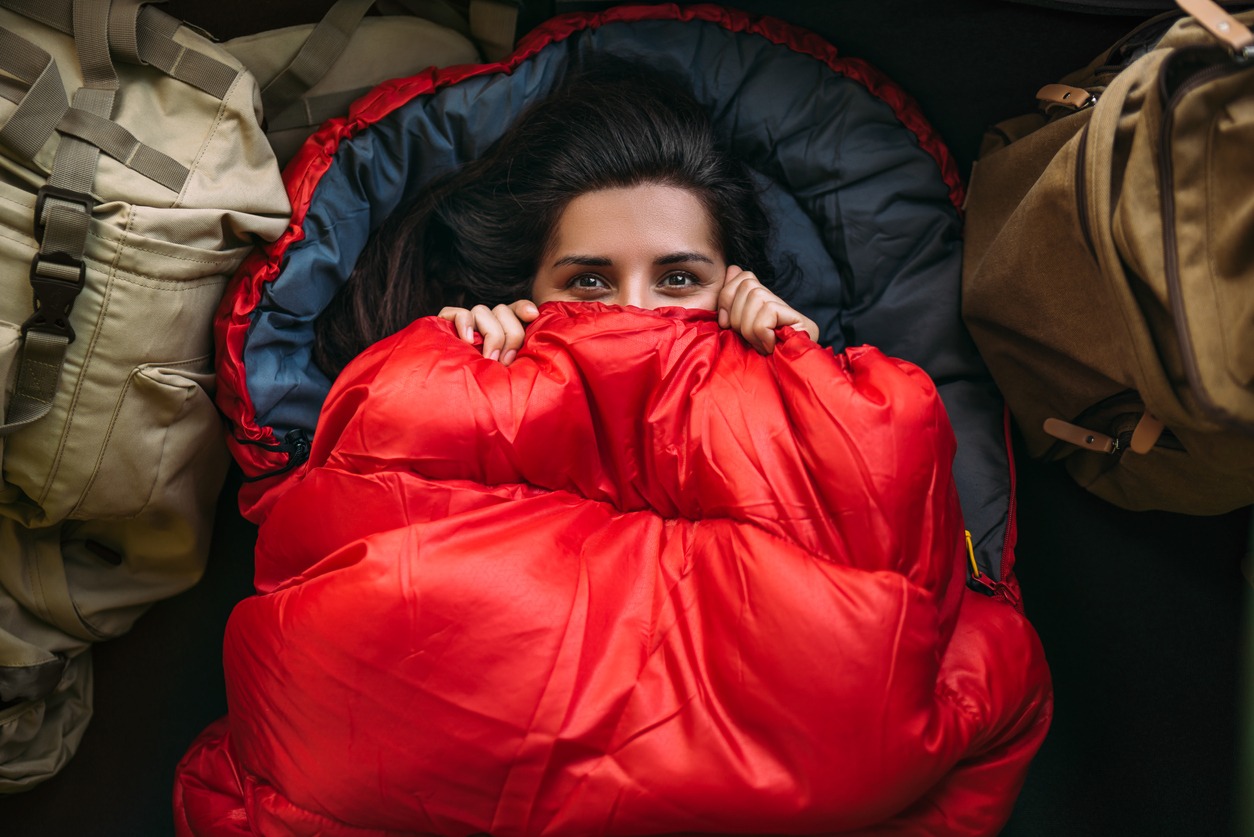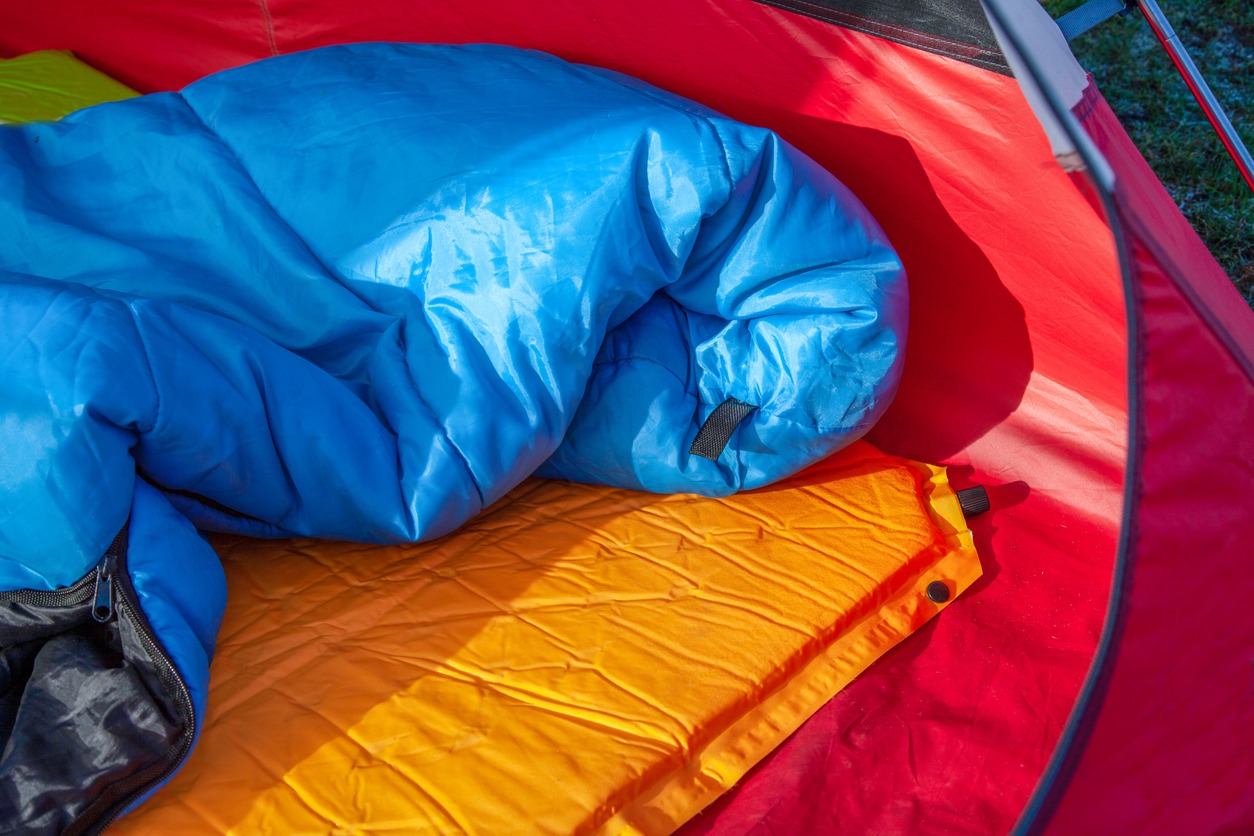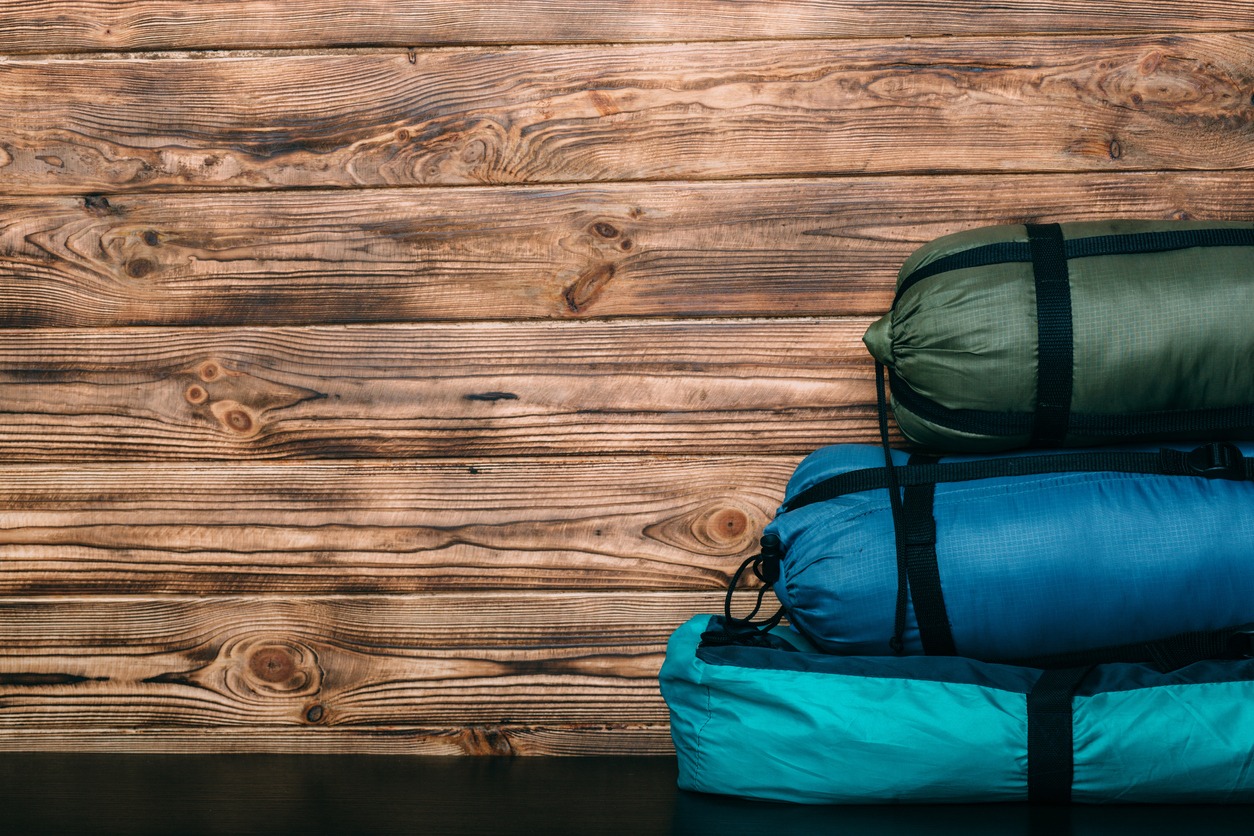Backpackers who have spent a cold night in the great outdoors know it is important to have a quality sleeping bag on a trip. Not only is it crucial in keeping you warm and helping you sleep peacefully and comfortably but it can also save your life during emergency situations.
Yet, with the myriad choices available in the market, everything can be a confusing gear-buying task. Luckily, with a little understanding of all the crucial aspects to consider, your decision-making process will be a whole lot simpler.
With that, here’s our guide to picking a sleeping bag for backpacking. Take your time and evaluate all the information and you’ll soon find the one ideal for your body and your adventures.
Factors to Consider When Picking a Sleeping Bag for Backpacking
1. Season Ratings
One of the primary things to look at when purchasing a sleeping bag is seasonality. Like backpacking tents, sleeping bags have season ratings which signify the time of the year they’re specifically designed for.
These ratings are based on an average sleeper and are utilized as general guidelines when comparing sleeping bags. You can find three broad seasonal categories in the market: summer, three-season, and winter.
- Summer: Summer sleeping bags are thin and lightweight, and are best suited for backpacking trips in warm summer climates with a temperature range of +30 degrees Fahrenheit or higher. If you know the weather in your target location is going to be warm, opt for these bags as they’re spacious and maximize ventilation.
- Three-season: Three-season sleeping bags are rated for the temperature range of +15 to +30 degrees Fahrenheit. They are ideal during the cool seasons of spring and autumn when nights are only mild-cold and there’s no presence of frost.
- Winter: Winter sleeping bags are designed for extreme high-altitude backpacking trips where temperatures can drop +15 degrees Fahrenheit and lower. These bags are also suited when nights are incredibly cold with or without frost and snow. They are generally heavier and bulkier. Thus, they are also more costly than other bags, but they’re worth investing in if you expect to be in cold, sub-zero temperatures.
Understanding a sleeping bag’s season rating is vital as the last thing you want to happen is to choose the wrong bag and shiver at night when the temperature suddenly drops to a level lower than what you expected.
A good rule of thumb that most backpackers follow is selecting a sleeping bag with a lower season rating than the lowest nighttime temperature you presume you’ll be experiencing on your trip. That way, you’ll always be prepared should the night get extremely colder. If not, don’t fret as you can simply unzip your bag if it becomes too hot at night.
2. Temperature Rating
Sleeping bags also come with a specific temperature rating, which tells at what range of conditions a sleeping bag performs the best. Manufacturers independently test their products using EN/ISO standards to obtain the rating.
To do so, manufacturers place dummies with various sensors into different sleeping bags. Each dummy wears a base layer of clothing similar to what typical backpackers would wear. The testers then arrange the sleeping in a controlled and static environment and monitor the signals from the dummy as the temperature changes. Thus, determining the conditions where the bag is still effective or no longer practical.
Note that the tests were done using dummies, so you may have to consider your own physiological makeup, and how cold or warm you usually sleep.
Based on the results from the test, the sleeping bag is labeled to show its comfort, transition, and extreme temperature range.
- Comfort Range: This is the temperature range where a standard adult woman can comfortably sleep, without feeling cold, in a relaxed posture.
- Transition/Lower Limit Range: This is the temperature range at which a standard adult man is in a state of thermal equilibrium. That means that a standard adult man is fighting against the cold and doesn’t feel overwhelmingly warm, but isn’t shivering, either.
- Risk/Extreme Range: This is the absolute rating of the sleeping bag and states the temperature range at which it can keep a standard adult man alive for up to six hours without succumbing to hypothermia. As such, you should only utilize extreme cold-weather sleeping bags in emergency situations or frigid temperatures.
Be wary that the temperature rating is just a guide. Like how diverse backpacking locations are, so are the conditions that you can experience on your trip. How you feel, what you eat, how hydrated you are, how windy it is, and what you’re wearing all dramatically affects how warm you sleep. So, when checking sleeping bag temperature ratings, always lean on the side of caution by adding a few allowances. Again, you can always unzip if you’re too hot, but you’re likely doomed if you feel too cold on a chilly, restless night.
3. Insulation Type
Another important step in picking a sleeping bag for backpacking is your insulation choice. You can choose between down or synthetic fills and we highlight their key difference below:
Down Insulation
Down insulation generally costs more than its synthetic counterparts. They are the more preferred choice as they are lighter, more compressible, and have a greater warmth-to-weight ratio. You also get the bang for your buck as it is more durable and performs well in cold, dry conditions.
What’s even great is that it keeps warmth more consistently for longer periods of time. You’ll likely get decades out of a down bag, if properly cared for.
However, there are a few drawbacks to this type of insulation. When wet, feathers and plumage can get droopy and lose their loft, canceling their ability to trap warm air. Luckily, some manufacturers are now adding DWR (durable water repellent) coating on down sleeping bags, allowing them to slowly catch up.
Synthetic Insulation
On the other hand, synthetic insulation retains its loft and continues to insulate even when soaked. It also costs less, making it a more popular choice for casual, budget-oriented backpackers. Moreover, the non-allergenic synthetic insulation is also fast-drying, making it best suited to backpackers visiting damp environments.
A tradeoff is that synthetic sleeping bags use polyester fibers, which need more space to provide the same intensity of insulation. With that, they tend to be heavier and bulkier than sleeping bags filled with down. If you intend to pack with minimal weight and bulk, then you may prioritize getting a down sleeping bag instead.
Be wary that design innovations primarily go into the insulation distribution on the sleeping bag’s liner and outer shell. Down sleeping bags utilized a wide array of baffled constructions, while synthetic sleeping bags use shingled, quilted, or offset quilted construction. The main purpose is to ensure the even distribution of the insulation and prevent cold spots.
4. Fill Power
If you choose to get a down sleeping bag and check its specs, you’ll most likely notice a number relating to its fill power like “550-fill down, 600-fill down, or 700-fill down.”
Fill power indicates how much space an ounce of down takes up in a cylindrical tube. It ranges from 550 to 900. The higher the number, the higher the quality of the down. Ones on the premium end are pricier but expect that they weigh less, heat better, and are more packable compared to lower-fill-power down.
To give you more insight, see the common fill power values below:
550-600 Fill: Sleeping bags with fill power on the low end of the spectrum are the most affordable you can find in the market. While they can be quite heavy and less compressible than other down bags, they are lighter and more packable compared to their synthetic counterparts.
700 Fill: 700-fill down sleeping bags falls on the mid-range. These are perfect for you if you want to get a balance between weight and cost savings.
800+ Fill: These sleeping bags are the costliest sleeping bags you can purchase, but they are generally worth their price. They are ultra-light and can compress to very small sizes, making them ideal for backpackers who want to pack minimal weight.
5. Sleeping Bag Shapes
You can also find a variety of sleeping bag shapes to choose from. While all are designed to provide comfort and warmth, each shape has its own perks and drawbacks. For instance, some campers want some wiggle room, but some shapes are designed for cutting weight, minimizing size, and improving packability. To help you choose, let’s compare some common sleeping bag shapes:
Rectangular Sleeping Bag
Rectangular sleeping bag is the most traditional shape designed for backpackers who love ample room to move around when they sleep. They are less expensive than other designs and are more comfortable as they allow you to spread out and sleep in the natural position. The catch is that this shape is less effective in retaining heat, given that there is more dead space inside. Moreover, they are quite heavier and bulkier due to the additional materials. These bags can also be unzipped and utilized as a blanket. With that, they are best suited for summer backpacking trips.
Mummy Sleeping Bag
Mummy sleeping bags are the lightest type of sleeping bag. They are wider across the chest but taper down narrowly at the foot end to provide a snug fit, similar to an Egyptian mummy. Though the tightly sculpted shapes make them significantly lighter than rectangular sleeping bags as they don’t have excess fabric, some backpackers find them pretty uncomfortable or even claustrophobic, especially those who like to curl up or move around when they sleep. An advantage is that they are very effective in keeping you warm as there is very little dead space. They are meant to cut down on weight, making them fit for backpacking.
Barrel-shaped Sleeping Bag
Also called semi-rectangular or modified mummy, barrel-shaped sleeping bags provide more room at the foot end. Thus, making it less restrictive and allowing better movement. Most of these types also feature an additional zipper at the bottom that helps regulate temperature and a hood that helps improve insulation in colder conditions. Typically a crossover between rectangular and mummy sleeping bags, they are a great alternative if you want to cut down on weight but don’t want to feel like you’re entombed.
Double Sleeping Bags
Double sleeping bags are designed for buddies or couples sharing a sleeping bag. These work great, especially for alpine backpacking pursuits as two people sharing body heat is one of the most efficient ways to stay warm. With that, they can also help save on total packing weight as you can opt for a lighter bag. Alternatively, it can be used by a single person who is not comfortable with the space of a normal-sized sleeping bag.
6. Size
While the shape categories are pretty general, actual sizing can vary a bit from one bag to another. Sleeping bag brands may also have different dimensions, so it’s best to check the brand’s dimensions before buying a specific bag. Typically, you’ll find sleeping bags in two to three sizes in terms of length for both men and women.
Adult Sleeping Bags: Most adult sleeping bags come in regular and long sizes, but some may also have short sizes. Should your height fall near the upper end of the size range, feel free to try the bag and the next size up. Check which one you prefer but expect that you will feel warmer and save on weight on the smaller size.
Women’s Sleeping Bags: These bags are typically shorter, narrower at the shoulders, and wider at the hips as they’re designed to fit a woman’s contours. They are also generally warmer as women tend to be more vulnerable to feeling cold.
Kid’s Sleeping Bags: These bags are shorter and smaller versions of adult sleeping bags. They are meant for children and are more affordable for their smaller size. Testing can’t be conducted on these sleeping bags, but many brands still provide these bags with an estimated temperature rating.
While measuring your body dimensions can do wonders, nothing can beat visiting your gear shop and testing the products when you’re aiming for the best fit.
7. Shell Denier
Shell denier (D) is a spec that indicates the thickness of the sleeping bag’s outer material. The higher the number, the thicker the shell. The lower it is, the thinner the outer material. For most outwear like jackets, denier is an important factor as your gear is likely exposed to many outside elements. For sleeping bags, durability isn’t much of a factor as you’ll most likely be using your sleeping bag on top of a pad and inside your tent.
However, if you’re a person who is less cautious in handling gear, a fan of cowboy backpacking who travels without a tent and sleep right over terrain and under the stars, or occasionally bring your four-legged friend on your trip, you may want to look for sleeping bags will a thicker denier made of more hardwearing material. Otherwise, you can simply opt for a thinner denier to save weight and packed size.
8. Weight
Weight becomes more crucial as you get more serious with your backpacking hobby. The insulation, shape, fill power, and temperature rating will all play a role in achieving the ideal weight of a sleeping bag for your trip. Typically, you’ll want one that has down insulation, high fill power, low denier, a mummy shape, and a warmer temperature rating relative to weight to get a lightweight, more compressible, sleeping bag. As with most types of backpacking essentials, note that the tradeoff for going light is higher cost. If you’re a serious backpacker who travels a lot and covers more ground, you’ll find the minimal weight and better packability worth spending for.
9. Features and Accessories
Along with the other earlier-mentioned factors, there are several key features and accessories that you need to look out for when picking a sleeping bag for backpacking.
Anti-snag zippers: Nothing can be worse than the zipper getting snagged as you try to open or close your sleeping bag. Not only is it annoying, but it also leads to extra wear and tear on your sleeping bag’s delicate fabric. Luckily, you can avoid such scenarios by opting for models with anti-snag zipper features. Some manufacturers employ guards on the zipper along its full length, while others cover the zipper itself. Take note that smaller zippers are also more likely to snag, so it’s best to opt for zippers with wider, sturdier teeth for smoother zipping and unzipping.
Left or right zip: This one is pretty simple. If you’re left-handed, get a sleeping bag with a zipper on the right. If you’re right-handed, look for one with the zipper on the left. Imagine you’re lying on your back, it is more practical to use the zipper with your dominant hand reaching over your body rather than trying gymnastics moves if the zipper is situated on the same side as your leading hand.
Sleeping bag fabric: Outer fabric must be made out of durable polyester or nylon-ripstop. If possible, look for one with a DWR coating to protect the insulation inside from soaking and dampening. On the other hand, inner linings should be made from fine nylon and polyester as they’re best for reducing moisture absorption.
Sleeping bag hood: A hood provides added warmth during the night. Some hoods include a drawcord, which allows you to close it snugly against your face. Be mindful that rectangular sleeping bags often do not have an attached hood.
Pillow pocket: Some sleeping bags have a pillow pocket. It’s a compartment where you can place a few clothes to create a pillow. If your sleeping bag doesn’t have a pillow pocket, you always have the option of bringing a separate pillow.
Stash pocket: Other bags also have nifty little storage usually located near the top of the bag. These pockets are handy for storing small items, such as your lip balm, watch, or your phone.
Draft-blocking features: If you’ll be using your sleeping bag in colder weather, it’s best to look for one with draft-blocking features. Some bags will have draft tubes that run its length behind the zipper. They’re filled with insulation and prevent warm air from escaping. Others have draft yokes or collars at the top of the bag around your neck to do the same. If you’re backpacking during summer, then don’t fret too much about this feature.
Stuff sack: Sleeping bags usually come with a stuff sack where you can tightly pack the bag to reduce its size, making it easier to store in a backpack. Just note that keeping it too tight may ruin the insulation and impair its ability to loft fully over time. To keep your sleeping bag’s longevity, place it on a cotton storage bag or a large mesh in between your trips.
Sleeping bag liner: Some sleeping bags also allow liners to be slipped inside. These provide an additional layer of warmth, keep the inside clean, and minimize wear, as well as allow you to use it in a wider array of temperatures.
10. Cost
Lastly, the cost of a sleeping bag will depend on your needs and the activities you’re planning to do. If you’re a casual backpacker, then you may opt for a cheaper one to use for your trips. If you’re a serious backpacker who needs more superior quality, then expect to pay more money to meet the specs you need for your adventure. Just be careful as getting something cheap can be more expensive in the long run as cheaper sleeping bags tend to be usually uncomfortable and wear out easily, forcing you to buy a new one.
Takeaway
Summing it all up, the perfect sleeping bag is one that provides you with the optimum quality of sleep, comfort, and warmth. No matter what backpacking adventure you’re in, you should take all factors above into account to get the best sleeping bag for you. Happy backpacking!



